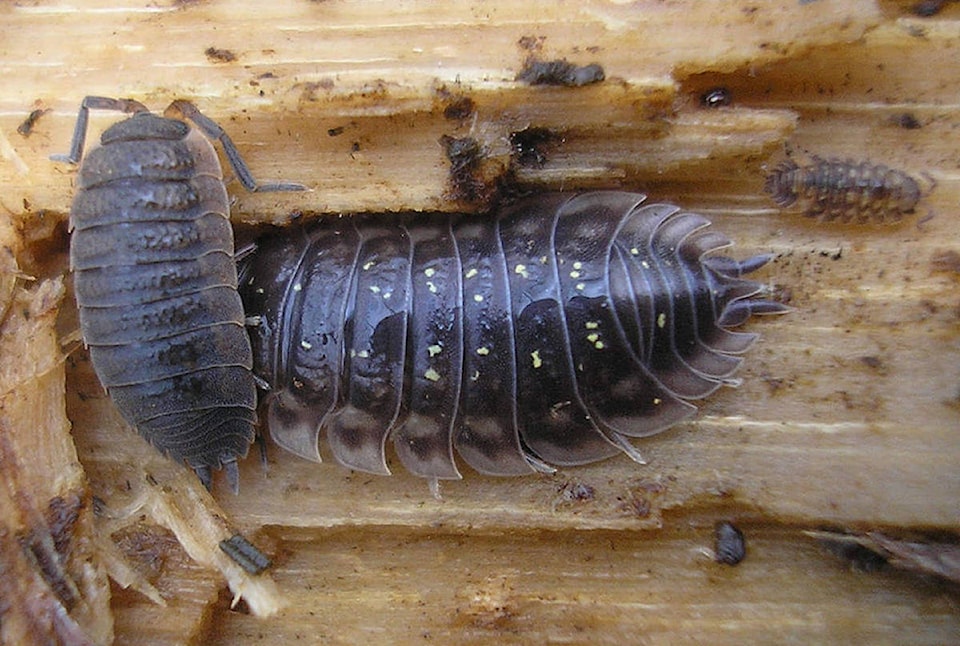By Mary and David Lowther
Geographers are an interesting bunch, and evidently obsessive about terminology. A case in point would be the tidal wave, which has nothing whatever to do with the tide. This bothered the world’s geographers so much that they had a meeting at which it was decided to stop using such misleading language. Instead, to honour their Japanese hosts, the term was changed to “tsunami.” The Japanese delegates opposed the motion on the grounds that tsunami translates literally into English as “tidal wave,” but they were outvoted.
But I digress.
Geographers also call our climate a “temperate rain forest.” Perhaps they need another world conference because in Mesachie it rains intemperately. If accurate descriptors are important, this one needs to be looked at as well. Words like “temperate” might lead a gardener into thinking she could easily transfer lowland acquired skills to the wilds of the upper Cowichan.
Take tunnels and cold frames, for instance. West Coast agricultural writers say we can garden all winter with the judicious use of these protective coverings because our climate is so “temperate.” When I gardened at sea level in Victoria such tunnels and cold frames worked but when I’ve used them in Mesachie, slugs and wood bugs appeared as if from nowhere. Within three weeks my crops were demolished.
As soon as that cool air hits and life becomes “temperate” after a hot summer, chomping maws crawl out from their lairs where they’ve been hiding and make a slime trail for my tunnels and cold frames. It took a few years to learn that this is an annual occurrence and nothing I could do would stop the destruction, so this fall I’ll plant more crops that overwinter well and abandon the idea of garden fresh salads and celery before spring.
This year I’m not using the cold frame or tunnel because I find it just as easy to schlep flats of seedlings in and out of the greenhouse to harden them off. If I didn’t have a greenhouse I would use a cold frame, but I’d make sure my flats inside it were completely covered with spun cloth cover to keep out slugs and wood bugs.
Dry and hot keeps these voracious evildoers away, so the trick lies in maintaining a dry perimeter so they won’t sneak in from the cool grass. Keep the soil from getting wet except for the immediate vicinity of the crop. I never use a sprinkler and hand water any seeds that get their start in the garden, such as root crops and beans. Once the seeds sprout up they get watered like the rest of the garden, with soaker hoses.
Crops that survive winter unprotected, like kale, Brussels sprouts and leeks, grow well here because, I suppose, slugs and wood bugs find someone else’s cold frame to live in. David argues that any self respecting slug would refuse to eat kale wherever I plant it, but he hasnae a drop of Scots bluid. Nonetheless, this year I’m planting more like the foreigners in Ontario and New Brunswick and plan on growing more storage crops for the winter, like squash, dry beans and root crops as well as those that overwinter well.
I read that wood bugs are beneficial in that they break down compost so redworms and such can digest it, and that they make little impact on the garden because they prefer dead plant material. I bet that author is a geographer. Those gardens must be dry when the authors apply compost and their wood bugs must die. If I do that without solarizing the damp, cool soil in spring after I spread compost, wood bugs and their sluggish accomplices will eat everything alive.
Gardening books have taught me a lot, but perhaps the most important lesson is “See what works and doesn’t in your own garden and write it down.”
Growers have had to think for ourselves because no plot is like any other. All the outside expertise in the world must yield to the merciless realities of climate, and you are the expert who must come up with your own solutions.
On the subject of merciless climate, I wonder what the Japanese word for “temperate rain forest” is.
Please contact mary_lowther@yahoo.ca with questions and suggestions since I need all the help I can get.
